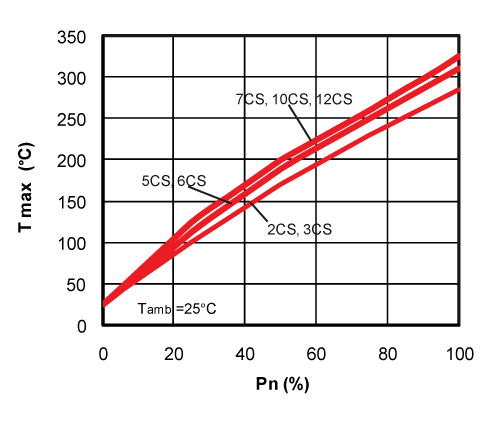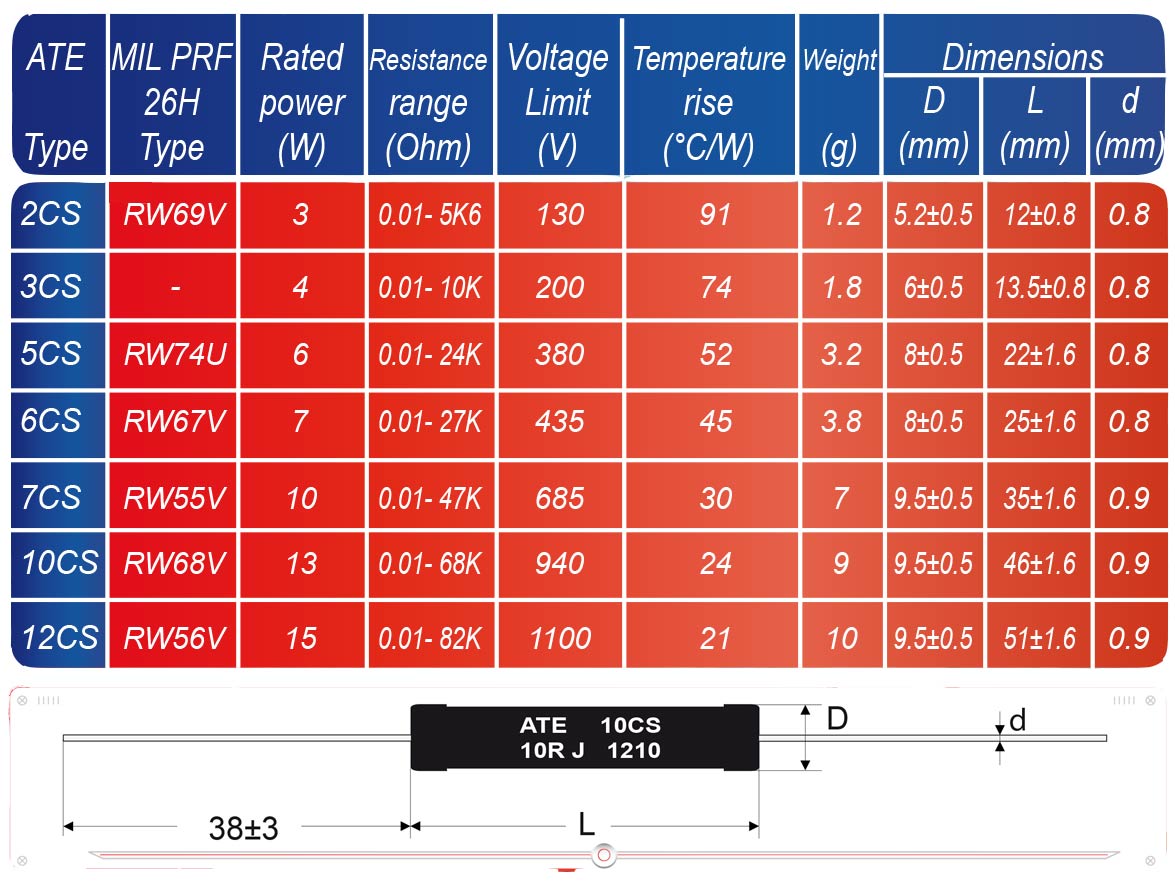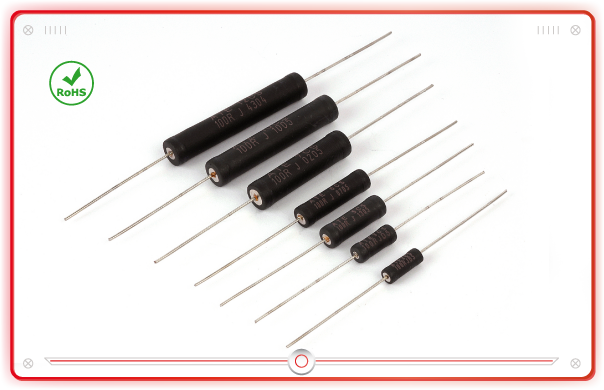Description
Electrical Specifications
– Ohmic values
E24 Series. For out of range or not standard ohmic values, consult ATE Technical Dept.
– Tolerance
Standard 5%. Available on request up to 1% (for values >R047).
– Temperature coefficient
Typical values: ±100 to ±30 ppm from R10 to Rmax Consult factory for special applications
– Dielectric strength
500 Vdc da 2CS a 6CS
700 Vdc da 7CS a 12CS
– Insulation resistance
1000 MOhm minimo
100 MOhm dopo le prove di umidità
– Sovraccarico
5 secondi a 10 volte la potenza nominale
5 secondi a 5 volte la potenza nominale per i tipi 2CS e 3CS
– Non inductive
Models of equivalent physical and electrical specifications are also available with non inductive Ayrton-Perry winding

Mechanical Specifications
– Terminal strength
10 lb. pull test.
– Solderability
Continuous, satisfactory coverage when tested in accordance to MIL-PRF-26 H.
Materials
– Core
Ceramic steatite or alumina centerless ground
– Resistive element
Copper-nickel alloy or nickel-chrome alloy with specific temperature coefficient
– End caps
Stainless steel
– Coating
Special high temperature silicone
– Standard terminals
LF tinned copper or LF tinned copperweld
Point of measure: L + 20mm
DERATING
These resistors can be used in a temperature range form -55°C to +350°C To use these components in applications with working temp. higher +25°C You have to make a power reduction with linear derating from nominal power to zero at 350°C.




